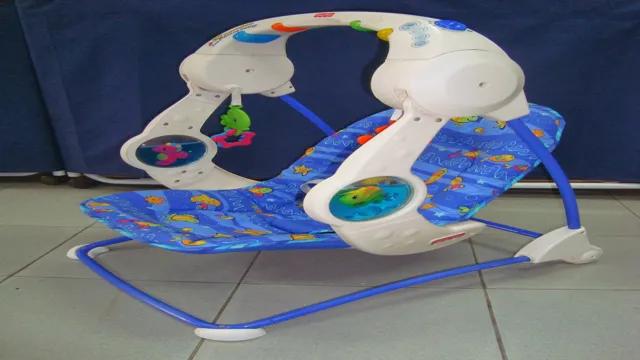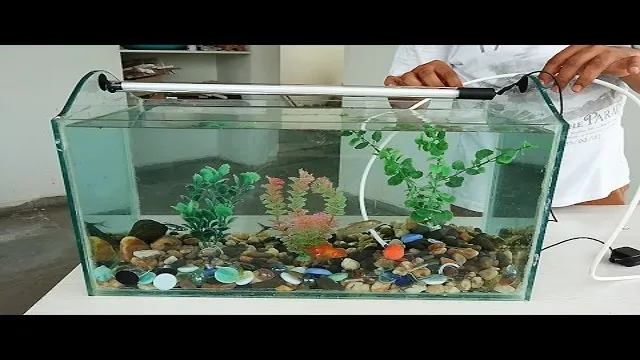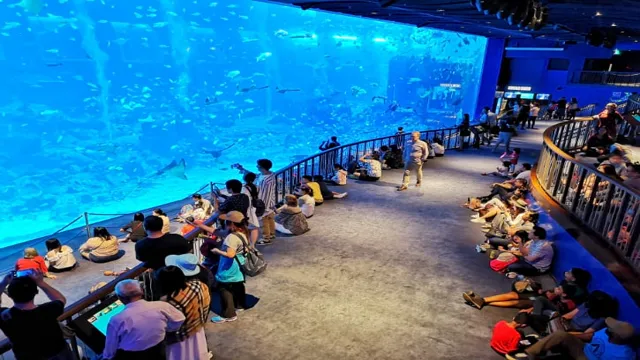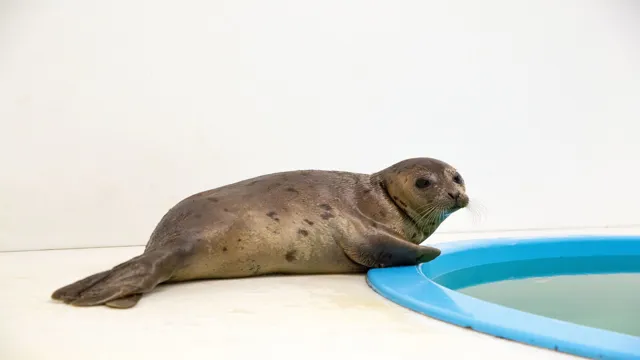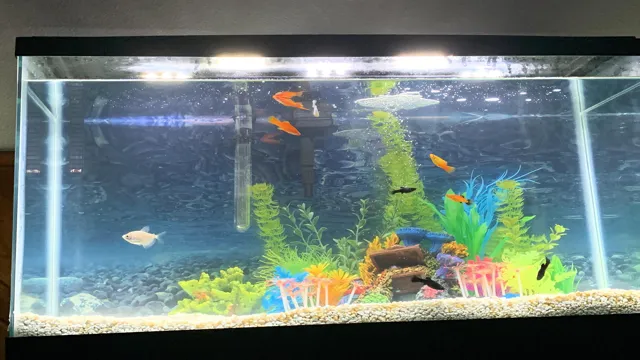Are you looking for a more natural and nutritious diet for your aquarium fish? Consider collecting live food for them! Not only does it provide essential nutrients, but it also stimulates the natural hunting instincts of your fish, leading to a more active and engaging tank environment. In this blog, we will explore the benefits of collecting live food for your aquarium fish and provide tips on how to do so safely and efficiently. So, whether you’re a seasoned aquarium enthusiast or a beginner, keep reading to learn more about this fascinating aspect of fishkeeping.
What is Live Food?
Live food for aquarium fish refers to live organisms that are used as a source of nutrition for your aquatic pets. As much as it is essential to provide your fish with a balanced diet, incorporating live food in their feeding routine is just as crucial. Collecting live food can be a bit tricky, but it doesn’t have to be.
You can start by cultivating a culture of infusoria or brine shrimp in a separate container. This approach allows you to have a constant supply of live food for your fish. Alternatively, you can purchase live food from local pet stores or online retailers.
Some popular options include bloodworms, blackworms, daphnia, and plankton. Regardless of the source, ensure that the live food you provide is fresh, healthy, and safe for your fish. By incorporating live food into your fish’s diet, you can promote their health, enhance their colors, and create a more dynamic and stimulating environment inside your aquarium.
Overview of Live Food
Live food, as the name suggests, refers to food that is alive and fresh. It includes fruits, vegetables, sprouts, nuts, seeds, and other plant-based foods that have not been cooked or processed. The concept behind live food is simple – it is believed that when food is cooked or processed, it loses its vital nutrients and enzymes which are essential for our health.
Live food proponents argue that consuming raw, fresh, and alive foods can provide us with the maximum amount of nutrients and enzymes, which can help us maintain good health, prevent disease, and even promote healing. By incorporating live foods into our diet, we can improve the quality of our food, increase our energy levels, and support our overall well-being. So, if you want to experience the benefits of live food, start by incorporating more raw fruits, vegetables, and nuts into your diet.
Your body will thank you for it!
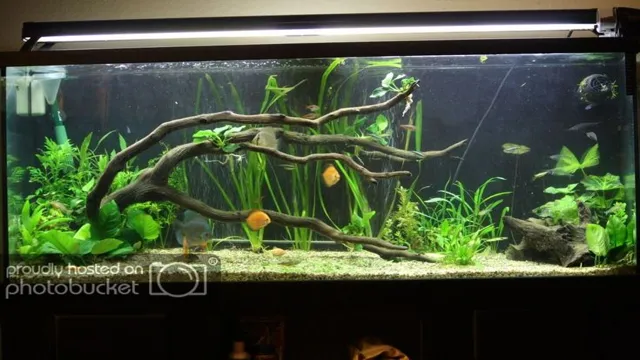
Types of Live Food
Live food is any type of unprocessed and fresh food that is currently alive, such as insects, worms, small fish, and even plants. These types of food provide a great source of nutrients to animals that consume them, as they are rich in proteins, vitamins, and minerals that are essential for growth and development. Live food is commonly used as a diet for pets such as reptiles, birds, and small mammals, and they are becoming increasingly popular.
Insects such as crickets, mealworms, and waxworms are used as live food for many pets, while small fish like brine shrimp and daphnia are popular for fish and amphibians. Plants, such as duckweed and spirulina, are also used as live food and are popular for herbivorous animals. Live food can provide a natural and healthy diet for pets, and can also be an enjoyable and engaging way for pet owners to interact with their animals.
Collecting Live Food: Tips and Tricks
Collecting live food for your aquarium fish can be an enjoyable and rewarding experience. One of the easiest ways to collect live food is to search for it in your local environment. You can explore your backyard, local stream, or pond to find live insects like crickets, grasshoppers, and worms that can make great meals for your fish.
Another option is to breed your own live food, such as brine shrimp or daphnia. This method provides a constant source of fresh food that is free of contaminants and parasites. For those who are short on time or resources, you can also purchase live food from your local pet store or online. (See Also: How to Produce Algae in Aquarium: Tips and Tricks for Growing Healthy Algae)
When selecting live food, be sure to choose food that is appropriate for your fish species and size, and be sure to feed them in moderation to avoid overfeeding and water quality issues. Many aquarium hobbyists enjoy the process of collecting live food for their fish because it adds an extra level of engagement and excitement to their hobby.
Best Time to Collect
When it comes to collecting live food, timing is everything. The best time to collect live food is when they are most active and readily available. For example, if you’re looking to collect insects for your pets, you’ll want to do so during the early morning or late evening when they are out feeding.
This is also the time when these insects are most vulnerable for predators, making them easier to catch. Additionally, you should avoid collecting live food during extreme weather conditions as they may not be available and may be too difficult to find. So, if you’re going to collect live food for your pets, make sure to time it right and choose the best moments to do so.
By doing this, you’ll be able to provide your pets with fresh and nutritious food, which will keep them happy and healthy.
Tools for Collecting Live Food
When it comes to keeping live animals as pets, providing them with live food can be a rewarding and stimulating experience. Whether it’s for reptiles, fish, or birds, collecting live food is an important and satisfying part of pet ownership. There are a few tools that you’ll need when collecting live food for your pets.
A net is a must-have; it’s the most effective way to catch insects, small fish, and other live prey. Tweezers are also handy for removing feeder creatures from their container and transferring them into your pet’s enclosure. If you are collecting live food from nature, a field guide can be helpful for identifying safe species and avoiding poisonous or harmful ones.
Additionally, always be sure to collect live food from areas that have not been treated with pesticides or other chemicals to ensure their safety. By keeping these tools in your arsenal, you can provide your pets with a healthy, diverse diet of live food that they’ll love.
Safe and Ethical Collecting Practices
When it comes to collecting live food, it’s important to remember that you are taking something from its natural habitat. As such, it is essential to do so in a safe and ethical manner. One way to ensure this is to collect only what you need and leave the rest behind.
It’s also important to avoid damaging the ecosystem by not collecting too much from any one area. Additionally, it’s essential to know what you are collecting and how it will impact the environment. For example, collecting certain species of fish or crustaceans can have detrimental effects on the balance of an underwater ecosystem, so it’s important to research and understand the species you are collecting.
Remember, by collecting live food, you are taking on a responsibility to the environment and its inhabitants. By taking a careful, educated approach, you can enjoy live food while minimizing the impact on the environment. (See Also: How to Become a Volunteer Diver at NY Aquarium: Tips and Requirements)
Preparing Live Food for Your Aquarium Fish
If you want to add a bit of variety to your aquarium fish’s diet, why not try collecting live food? Not only will it provide a more natural source of nutrition, but it can also be a fun activity for aquarium enthusiasts. One of the easiest live foods to collect is brine shrimp. You can purchase eggs and hatch them at home using a simple kit, or you can even collect them from saltwater environments using specialized nets.
Another option is to collect small insects and larvae from nearby bodies of water, such as mosquito larvae or daphnia. Just make sure to thoroughly rinse and inspect any live food before feeding it to your fish to avoid introducing any harmful bacteria or parasites into your aquarium ecosystem. With a little patience and effort, providing live food for your fish can be a rewarding and enriching experience.
Cleaning and Rinsing Live Food
When it comes to providing live food for your aquarium fish, it’s important to take the time to properly clean and rinse it to ensure the health and safety of your pets. Live food, such as brine shrimp or bloodworms, can carry harmful microorganisms or parasites that can harm your fish if ingested. To avoid this, start by rinsing the live food with clean, cold water before feeding it to your fish.
This will help remove any unwanted debris or impurities that could affect their health. Additionally, consider using a fine mesh strainer to further clean and separate the live food from any excess water. By taking the time to properly prepare your live food, you can help ensure that your aquarium fish stay happy and healthy.
Feeding Live Food to Aquarium Fish
Preparing live food for your aquarium fish is an excellent way to provide them with a balanced and natural diet. One of the most popular types of live food for aquarium fish is brine shrimp, which can be easily grown at home. To prepare the shrimp, you need to acquire brine shrimp eggs and a suitable hatching container, such as a plastic bottle.
Add saltwater and shrimp eggs to the container, and place an air stone to provide oxygen and circulation. After about 24 hours, the eggs will hatch into nauplii, which can be harvested and fed to your fish. Other types of live food, such as daphnia and blackworms, can also be cultured in a similar manner.
It is important to ensure that the live food is free of harmful parasites and diseases before feeding it to your fish, so always buy from reputable sources or culture your own. Providing your fish with live food offers numerous benefits, including increased activity, better growth, and enhanced natural behaviors. By incorporating live food into your fish’s diet, they will thrive and provide you with endless entertainment.
Conclusion
In conclusion, collecting live food for your aquarium fish doesn’t have to be a daunting task. With proper preparation and attention to detail, you can create a thriving ecosystem right in your own backyard. Plus, watching your fish feed on live food will provide endless entertainment and satisfaction.
So why settle for boring store-bought food when you can be the ultimate fish foodie and collect live food like a pro? Happy hunting, and cheers to happy, well-fed fish!” (See Also: How to Describe an Aquarium: A Comprehensive Guide to Captivating Aquatic Environments)
FAQs
What are some common live foods for aquarium fish?
Some common live foods for aquarium fish include brine shrimp, daphnia, bloodworms, and tubifex worms.
Can live food be harmful to aquarium fish?
Live food can be beneficial for aquarium fish as it provides essential nutrients and stimulates their natural hunting instincts. However, live food can also contain parasites and pathogens if not collected or prepared properly, which can be harmful to aquarium fish.
How do you collect live food for aquarium fish?
Live food can be collected in a variety of ways, such as gathering from natural bodies of water, using a culture kit to raise your own, or purchasing from a trusted supplier. It’s important to research and properly identify the live food and its nutritional value before feeding it to your fish.
What is the best way to store live food for aquarium fish?
Live food should be stored in a cool, dark place with proper aeration and moisture to keep it fresh and healthy for your fish. Different live foods may require specific storage conditions, so it’s important to research and follow the proper guidelines.
How often should you feed live food to aquarium fish?
The frequency of feeding live food to aquarium fish depends on the species and size of your fish, as well as the nutritional content of the live food. In general, live food should be offered as a supplement to a balanced diet and not as the sole source of nutrition.
Can live food be used for breeding aquarium fish?
Live food can be beneficial for breeding aquarium fish as it provides essential nutrients and encourages natural behaviors. Certain live foods, such as daphnia, can also help condition the fish for breeding.
What are some precautions to take when feeding live food to aquarium fish?
Some precautions to take when feeding live food to aquarium fish include avoiding overfeeding, properly identifying and preparing the live food, and monitoring your fish for any signs of illness or disease. It’s also important to quarantine any new live food before introducing it to your aquarium to prevent the spread of pathogens.


